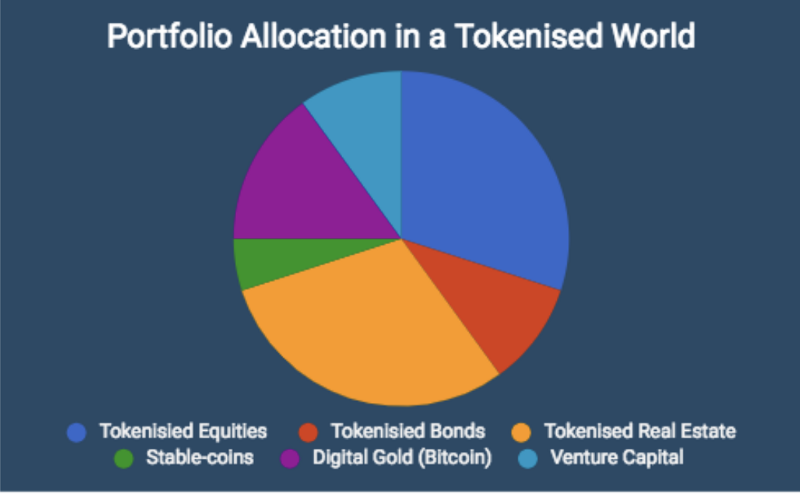‘Tokenisation’ of currency is just the start; next comes real estate, commodities and more

Pic: Rommel Gonzalez / EyeEm / EyeEm via Getty Images
The idea of digital tokens started with cryptocurrency — but “tokenisation” is now rapidly spreading to a broad array of products and services says top expert Henrik Andersson, chief investment officer for crypto fund, Apollo Capital.
“Tokenisation” — assigning a token as a unit of value for an asset — has the potential to dramatically change the nature of all asset classes — not just money.
The first generation of crypto assets created new, digital money assets like bitcoin and ether that only existed on their respective blockchains. (Blockchain technology provides an encrypted, public ledger for digital transactions).
Programming code governs these assets and ownership can be secured through public-key cryptography. The open-source code base is the governing law for these assets.
We now have new assets.
With Bitcoin, ‘digital gold’ was created. With Ethereum we got unstoppable, smart contracts and we have currency that can take new form as money becomes programmable.
We no longer have to rely on third parties to transact and there are liquid markets that never closes. The potential for these new assets is great, and we can’t yet imagine all the potential use cases and possibilities.
The next generation of crypto assets are likely to tokenised traditional assets; real estate, equities, bonds, commodities, venture capital and hedge fund interest.
New properties for traditional assets
The driver for tokenisation of traditional assets is the technology enabling new properties:
— Tokens are divisible. One Bitcoin is 100 million Satoshis (the smallest unit in Bitcoin). We will be able to transact in small fractions of e.g. real estate.
— We will be able to transfer ownership of all kind of assets seamlessly, instantly and at a very low cost. The overhead cost of the third parties currently involved will be minimised.
— Previous illiquid assets will become liquid such as real estate, ventre capital and hedge fund interest. Liquidity premium is likely going to unlock value in these assets.
As these assets tokenise they become programmable and tradable, new possibilities for escrow, and governance become possible.
New protocols for these assets are currently being formed. Firms like Harbor are working on the R-token standard for security tokens. As a result, regional-specific compliance and legality can be written into the smart contracts themselves.
The Future Portfolio
A future investment portfolio in a tokenised world might be completely liquid.
It could consist of crypto assets like Bitcoin, a stable coin like Dai or Basis, traditional tokenised assets like equities, bonds, real estate and alternative investments like venture capital and hedge fund interest.
Key difference between crypto assets and tokenised traditional assets
With Bitcoin and other purely digital assets we can secure ownership.
However, this is not possible with a real world asset like real estate or gold. If we tokenise gold, the physical gold can be seized even if you control the private key.
With Bitcoin, the ownership is guaranteed and there is no real world asset that can be compromised.
Crypto assets are the only assets in the world that can’t be seized, that won’t be the case when we tokenise traditional assets.
Henrik Andersson is the chief investment officer for crypto fund, Apollo Capital.
He has over 17 years experience in global financial markets, with almost a decade on Wall Street. Henrik has extensive experience across three continents as a quantitative analyst, senior research analyst and in institutional equity sales.
Apollo Capital is Australia’s premier crypto fund, allowing sophisticated wholesale investors to gain access to investment opportunities within the crypto asset market.
This article does not constitute financial product advice. You should consider obtaining independent advice before making any financial decisions.
UNLOCK INSIGHTS
Discover the untold stories of emerging ASX stocks.
Daily news and expert analysis, it's free to subscribe.
By proceeding, you confirm you understand that we handle personal information in accordance with our Privacy Policy.









